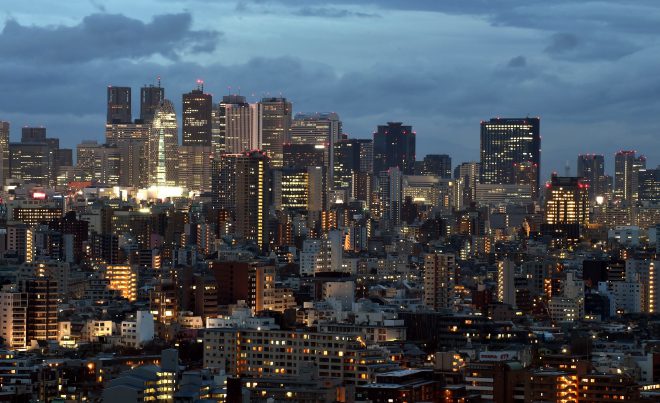Abenomics boom ties Japan’s 2nd-longest postwar growth
August 28, 2017
TOKYO- Japan's current economic expansion, whose start coincided with Prime Minister Shinzo Abe's return to power, is believed to have entered its 57th month in August, tying the second-longest boom in the postwar period.
The expansionary phase began in December 2012, when Abe came back as prime minister with the Abenomics reflationary policy. This month, it is believed to have matched the 57-month Izanagi boom between November 1965 and July 1970.
But economists say that private consumption lacks vigor as pay growth is sluggish for regular workers, who account for 60 percent of the total number of people employed in the country.
A Cabinet Office team determines peaks and troughs in the business cycle in Japan. In June this year, the team effectively confirmed that the latest expansionary phase reached its 53rd month in April, beating the 51-month asset bubble boom between December 1986 and February 1991.
The longest postwar growth lasted 73 months from February 2002 to February 2008.
Japan's real gross domestic product grew at an annual pace of 4 percent during April-June this year. Almost no economists think the country's economic growth halted this month.
The current phase "is expected to continue until after the consumption tax hike slated for October 2019, unless any big change happens to the overseas economy," the Mizuho Research Institute said.
Private think tanks have revised up their GDP growth projections to between 1.5 percent and 2.1 percent from between 1.2 percent and 1.6 percent.
The April-June growth was led by private consumption. But many economists view this as temporary, including Takashi Miwa, chief economist at Nomura Securities Co.'s Financial & Economic Research Center. Jiji Press
Latest Videos
- THE UNTOLD STORY EXPERT INSIGHTS INTO THE UKRAINE
- NEGOTIATING A NEW ORDER US RUSSIA TALKS ON UKRAIN
- Ukraine: A Pawn in the Geopolitical Game? Will Trump Intervene?
- US VP VANCE CRITICIZES EUROPEAN DEMOCRACIES AT MUNICH SECURITY CONFERENCE
- UNCOVERING THE WEB OF DECEIT: CIA INFILTRATION OF THE MEDIA
- SHIFTING SANDS: TULSI GABBARD’S CONFIRMATION AND THE EVOLVING GLOBAL LANDSCAPE
- FAUCI SCANDAL: A THREAT TO GLOBAL HEALTH AND DEMOCRACY






